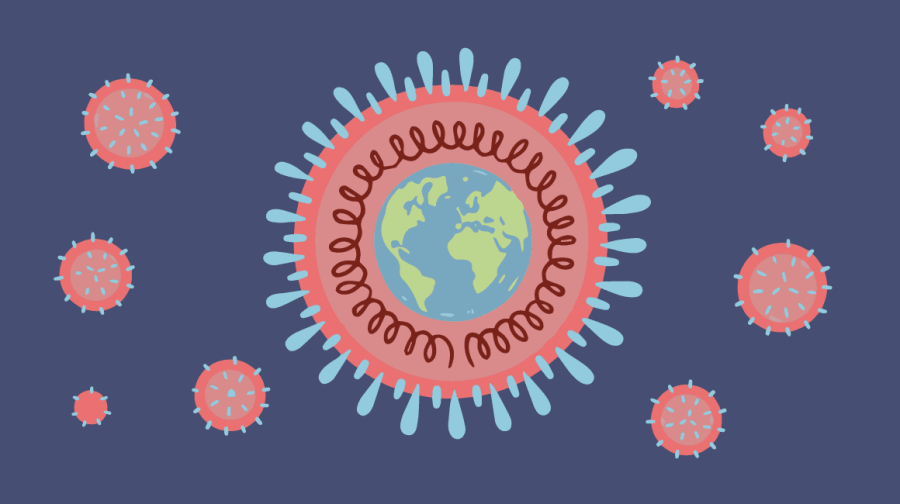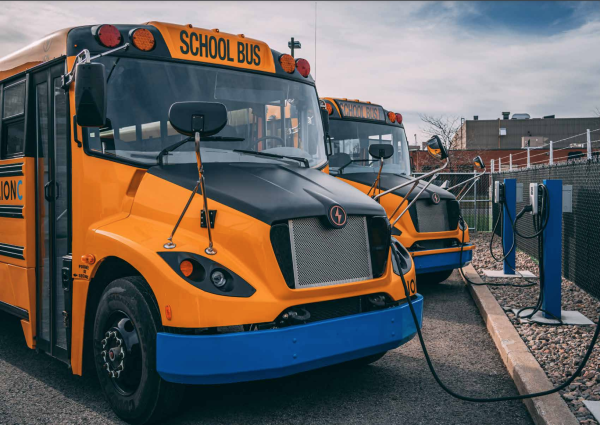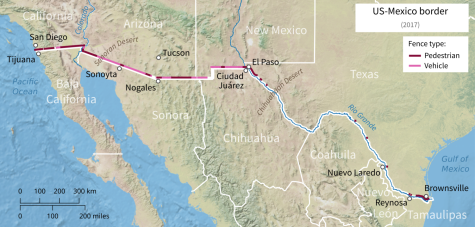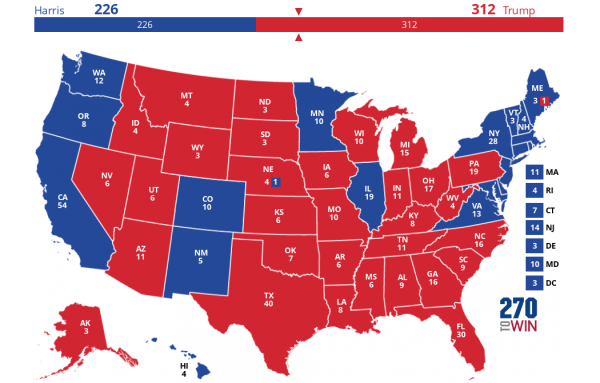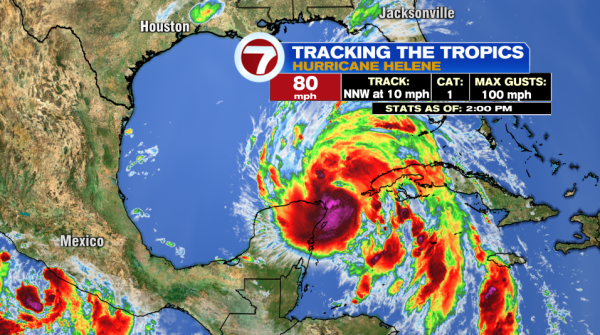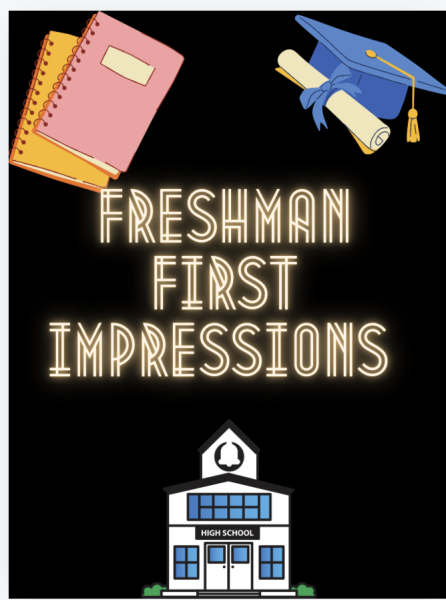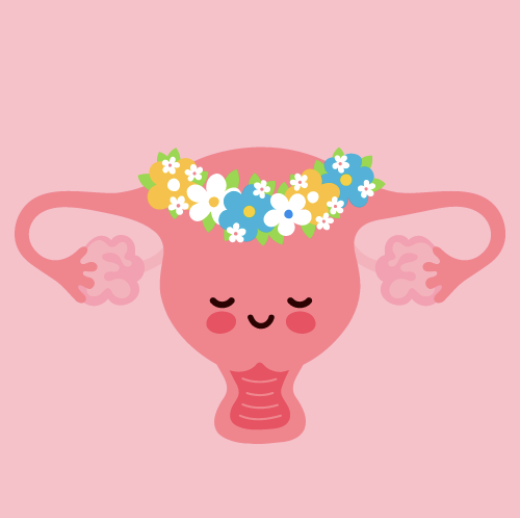New Omicron variant spreads quickly around the world
innovative genomics institute/Creative Commons
Two years into the COVID-19 pandemic, it feels like we’re going backwards, rather than forwards.
Just as we thought we might be able to get closer and closer to stability and living in a somewhat normal state, a domino tips over the whole stack, and we’re brought back to a time of remote schooling and restrictions reminiscent of 2020.
I don’t know if we will go back to the initial scare that was 2020, but it sure feels like we’re slowly retracting back to it.
Omicron was first detected in specimens collected on November 11, 2021 in Botswana and then on November 14, 2021 in South Africa. It was then reported to the World Health Organization (WHO) on November 24th, 2021.
South African health authorities informed the world of their discovery of the variant of Coronavirus now known as Omicron in late November and as soon as December 1, 2021, the first confirmed U.S. case of Omicron was identified, starting the fear of returned regulations again.
The new variant already accounts for over 94 percent of the cases in the U.S., according to the Centers for Disease Control and Prevention (CDC), which shows how quickly the highly transmissible variant has displaced the previously dominant Delta variant.
Hospitalizations in New Jersey have blown past the peak number reported during last winter’s surge from 3,873 people hospitalized a day on January 2, 2021 to 4,715 people a day January 3, 2022, causing tremendous pressure to be placed on hospital staff once again.
President Biden again urged Americans to get vaccinated and get booster shots to prevent the further spread of the disease and to take the stress off hospitals and medical staff. With other variants, like Delta, vaccines have remained effective at preventing severe illness, hospitalizations, and death. As of January 14th, 71.42% of the New Jersey population eligible for the vaccine have been fully vaccinated.
However, six new federal medical teams will be dispatched to aid overwhelmed hospitals in Ohio, Brooklyn, Rhode Island, Detroit, Albuquerque, and Newark.
For travel, all inbound international travelers are now required to get a negative COVID-19 test no more than one day from their departure for the U.S., including vaccinated citizens. Plus, the federal mask mandate requiring travelers to wear masks in indoor areas of public transportation has been extended through March 18.
Specifically in New Jersey, the interval between when people can get the Pfizer COVID-19 booster shot is now shortening from six months to five months. New Jersey has had the 11th highest positive cases with 1.89 million cases and approximately 29,634 deaths since the start of the pandemic.
The cities of Hoboken and Paterson enacted a new indoor mask mandate. Meanwhile, Newark has been gearing up for a new vaccine mandate for indoor dining and entertainment venues. Many have wondered if this will soon be a mandate statewide.
As New Jersey continues to see an intense spike in COVID-19 cases statewide, schools have started remote schooling. Some of those remote periods have ended while others are still going to at least mid-January.
As updated January 10, 2022, Eastern’s policy states that “everyone who tests positive for COVID-19, regardless of vaccination status should isolate for at least 5 full days and take additional precautions during and after isolation” with Day 0 being the day you start to see symptoms and 6 being your first day returning to school.
Plus, people who have had close contact with someone with COVID-19 do not need to be quarantined if they’ve completed a primary series of COVID-19 vaccinations AND have received the booster. However, people who aren’t fully vaccinated or have received the primary series of COVID-19 vaccinations but didn’t get the booster are required to be quarantined.
With the United States itself reaching an all time high of over one million positive COVID-19 tests this week as January 10th saw 1,433,977 people, the country has been seriously struggling in COVID-19 test distribution.
Many Americans can now get at-home COVID-19 tests at no cost through their private insurance. They can obtain the tests from pharmacies, retailers and online vendors. The program, which began Saturday, is part of the Biden administration’s effort to increase access to testing around the US.
Biden has announced that he plans to buy 500 million more COVID-19 tests, following his plans last month to order 500 million tests. The website is set to launch next week so Americans would be able to order free tests. The U.S. Postal Service has since been preparing to facilitate the mailing of the at-home test kits, hiring up to 7,000 temporary workers.
Past the testing issue, citizens have wondered if this would translate to another booster shot. Moderna CEO Stéphane Bancel, whose company also made a cutting-edge, mRNA-based COVID-19 vaccine, said last week that a fourth dose would likely become necessary in the fall, as the efficacy of boosters will decline over a period of several months.
As efficiency is declining over time and mandates are lowering the time of quarantine, variants just keep coming back to kick us when we’re down. However, though Omicron is the most transmissible variant to appear so far, it seems to cause fewer hospitalizations and deaths than previous mutations of the virus, which has made many question if the pandemic is finally close to an end.
Though it is too soon to say, the buildup of population immunity could allow public health professionals to start thinking more about long term handling of the virus going forward, to include imagining how we’ll live and resume life again. A new normal.
For the time being, keep your head up and do your part. If you have symptoms, the CDC says you can be around others after you isolate five days AND stop exhibiting symptoms. However, you should continue to wear masks for the five days following the end of symptoms to minimize the risk to others.


